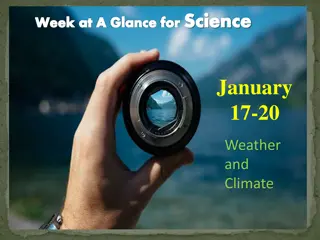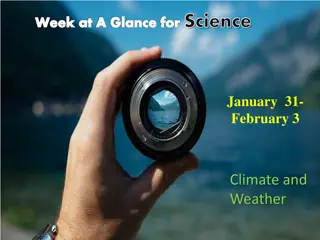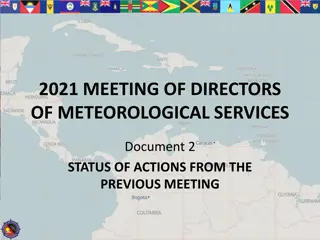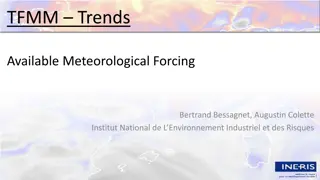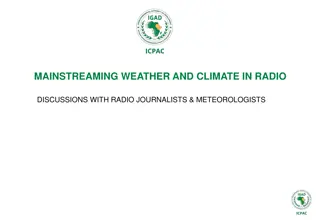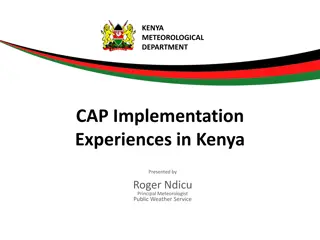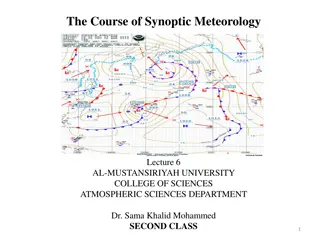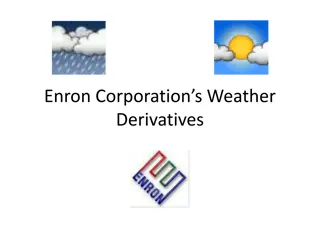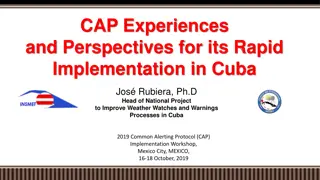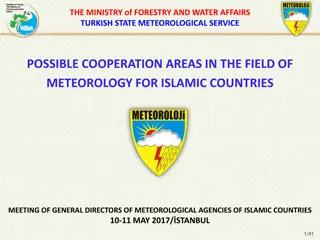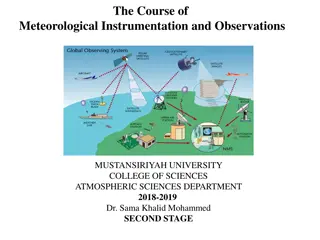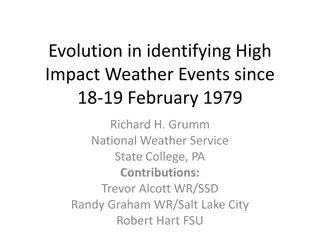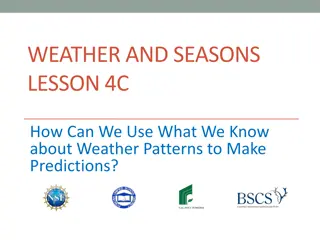Exploring Weather Phenomena and Meteorological Predictions
Dive into the fascinating world of weather phenomena and the science behind meteorological predictions in this unit of Living By Chemistry SECOND EDITION. Learn about proportional relationships, temperature scales, behavior of gases, and how to interpret weather maps to make accurate predictions. Engage in discussions on factors influencing weather, from jet streams to cloud cover, and work in groups to understand the dynamics of weather systems. Enhance your understanding of the interactions among Earth, the atmosphere, water, and the Sun in shaping daily weather conditions.
- Weather phenomena
- Meteorological predictions
- Proportional relationships
- Behavior of gases
- Weather maps
Download Presentation

Please find below an Image/Link to download the presentation.
The content on the website is provided AS IS for your information and personal use only. It may not be sold, licensed, or shared on other websites without obtaining consent from the author. Download presentation by click this link. If you encounter any issues during the download, it is possible that the publisher has removed the file from their server.
E N D
Presentation Transcript
Living By Chemistry SECOND EDITION Unit 3: WEATHER Phase Changes and Behavior of Gases
In this unit you will learn: about proportional relationships about temperature scales and how thermometers work the effects of changing temperature, pressure, and volume on matter about the behavior of gases how to read weather maps and make weather predictions
Lesson 49: Weather or Not Weather Science
ChemCatalyst The table gives the current weather conditions in Miami, Florida (shown on the weather map in the following slide with a star). Predict the weather for later today. Indicate whether you think the current conditions will increase, decrease, or stay the same. Explain your reasoning. Current Conditions at 1:30 P.M. in Miami, Florida Temperature 82 F / 27.8 C Pressure 29.95 in.Hg, falling Fronts Cold front to pass through today Conditions Mostly cloudy, wind gusts up to 30 mph NW Humidity 71%
ChemCatalyst (cont.) Weather map for October 27, 2008:
Key Question What causes the weather?
You will be able to: explain the phenomenon of weather in general terms list the variables meteorologists study or measure in order to predict the weather describe the basic components of a weather map
Prepare for the Activity Work in groups of four. Weather: The state of the atmosphere in a region over a short period of time. Weather is the result of the interaction among Earth, the atmosphere, water, and the Sun. It refers to clouds, winds, temperature, and rainfall or snowfall.
Discussion Notes Several factors affect the weather in North America. jet stream temperature cloud cover fronts precipitation pressure
Discussion Notes (cont.) Jet stream
Discussion Notes (cont.) Temperature highs in degrees Fahrenheit
Discussion Notes (cont.) Cloud cover
Discussion Notes (cont.) Fronts
Discussion Notes (cont.) Precipitation: rain and snow
Discussion Notes (cont.) Air pressure highs and lows
Discussion Notes (cont.) There are connections between the different maps. The precipitation map is most closely associated with low-pressure areas and with weather fronts of all kinds. The curves of the jet stream map generally match the curves of the temperature maps. The lows on the air pressure map are associated with the warm and cold fronts. Rain requires clouds overhead. However, the presence of clouds does not necessarily mean precipitation.
Discussion Notes (cont.) In the jet stream, air moves swiftly from west to east across the United States.
Wrap Up What causes the weather? Weather consists of precipitation, clouds, winds, and temperature changes. Weather is the result of interaction among Earth, the atmosphere, water, and the Sun. The jet stream, temperature, cloud cover, weather fronts, precipitation, and air pressure are variables that are all tracked by meteorologists in order to forecast the weather.
Check-In What do weather maps keep track of? How do they help meteorologists?





